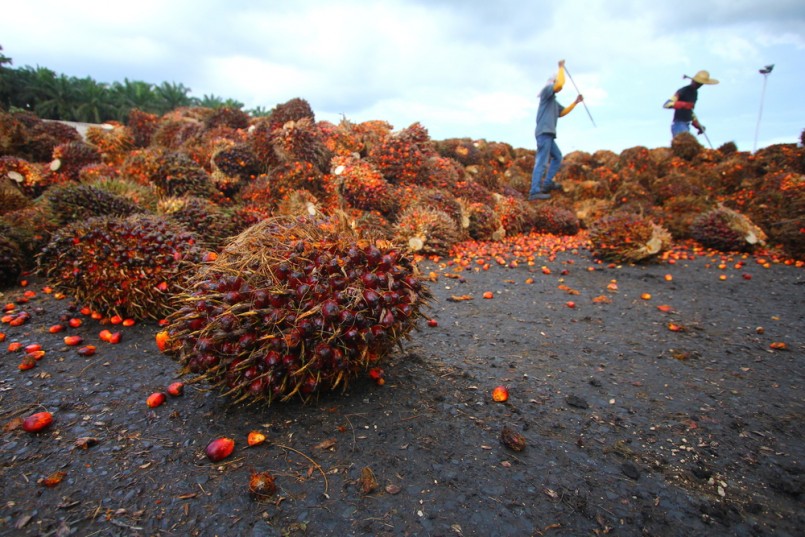Environment
The problem with palm oil: It’s in everything you use

Image: Shutterstock/KYTan
Name a product you use and it probably contains palm oil. Everything from peanut butter to chocolate to soap, shampoo, instant noodles and lipstick contains it, and thus we are all unknowingly consuming it regularly in massive amounts with pretty much no end in sight. Imagine half of all the the packaged products in your local grocery store in your mind, and that’s about how many contain palm oil for one reason or another. As the most widely used vegetable oil on earth, making up about 65% of internationally traded vegetable oil, it goes as no surprise that native tropical palm habitat is being ravenously destroyed to produce it—in turn causing both the indigenous peoples and forest creatures that live within to either being driven out, lose their livelihoods and see lethal cuts in the precious ecosystems upon which they rely, or face the same fate as the forest. The most widely mourned animal associated with palm oil’s ravenous deforestation rates is the beloved orangutan.
With the expected use of palm oil set to double by the year 2020, many environmentalists have become deeply concerned and set their minds on finding solutions. China and India, for example, will be adding substantially in coming years to the already unsustainable consumption rates, with subsequent increases on the amounts of deforestation spreading throughout the popular palm plantation regions of Indonesia and Malaysia. New areas of deforestation for palm oil are growing in Cameroon and Gabon in central Africa as well. In addition to the aforementioned issues arising from palm oil consumption rates, there’s an even more distressing effect—with most areas of deforestation being located on peat swamps, an enormous waft of carbon dioxide is released upon each clearing. WWF states that “up to 66% of all climate change emissions from oil palm plantations come from the 17% of plantations on carbon-rich peat soils.” Several other animals besides the orangutan are also heading quickly toward extinction due to this deforestation, according to World Wildlife Fund, including elephants, tigers and rhinos.
There is a silver lining, however small it may seem, in the form of sustainable palm oil. WWF’s Market Transformation Initiative works with palm oil markets and aims to direct current practices toward certified sustainable palm production—which increased to 18% in the year 2011, a rise from only 10% in 2011. Companies like Unilever and Wal-Mart have pledged to begin the transition to sustainably produced palm oil, meaning it is produced without any additional deforestation. The Union of Concerned Scientists keeps score cards with ratings on each companies’ level of cooperation toward sustainable palm oil, with unexpectedly high ratings going to such companies as Nestle, Dunkin Donuts and Colgate-Palmolive. In addition, shoppers can now look for the RSPO label on their favorite products to find out where they stand on palm oil sustainability. Roundtable on Sustainable Palm Oil, or RSPO, provides labels to companies who have applied and achieved several key points including environmental responsibility and conservation of natural resources and biodiversity. Last but not least, those with the means can help by actually buying the forest. Orangutan Outreach aspires to attract enough wealth to “acquire concessions that are hundreds of thousands of hectares and protect them,” states Richard Zimmerman, who runs the group. Perhaps a combination of these endeavors may just do the trick to keep our forests and the people and animals who need them alive.





0 comments